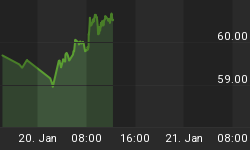Net foreign capital flows into the US rose 26% to $86.9 bln in February from a revised $69.1 bln in January (initial was $66.0 bln).
The TICS figure was well above the $65.7 billion trade deficit for the same month, after the prior months showed a coverage shortfall. But that was insufficient to prevent the dollar from further declining after having begun its sell-off during the Asian session. Accelerating the dollar decline was the NY Empire index, which hit a 6-month low to 15.8 in April.
More on Dollar weakness below.
POSITIVES
- Total net foreign purchases of US Treasuries soared 422% to $21.9 bln after 2 consecutive monthly declines, thanks to an increase in both private and official purchases.
- Net foreign private (usually hedge funds) purchases of US treasuries rose 360% to $11.4 bln foreign stocks after showing a net sale in January, contributing to 49% of the overall net purchases of Treasuries.
- Net official purchases of US treasuries rose 39% to $11.2 bln, the highest since June 2005.
- Net foreign purchases of US corporate bonds rose 18% to $30.5 bln, following 2 consecutive monthly declines.
- Japanese holdings of US treasuries edged up 0.6% to $673 bln after January's 2.4% decline, which was the lowest level in 2 years.
NEGATIVES
- Net foreign purchases of US stocks fell 22% to $16.5 bln after two consecutive monthly declines.
- Net purchases of foreign stocks by US residents rose 19% to $12.4 bln.
Weak Dollar Sentiment is more than just thin holiday trade
We view today's dollar declines as more than just provoked by thin Easter Monday trade. The dollar's muted reaction to stronger than expected TICS data and deteriorating sell-off following the 6-month lows in the NY Fed business index suggests that the bears may be here to stay.
Last week's dollar advances against the euro were clearly a case of traders paring down euro longs after the ECB quelled speculation of a May rate hike. But the dollar ended lower against the CAD, CHF and even the beleaguered GBP. Despite better than expected reports on international trade, retail sales, and industrial production last week, EURUSD had remained little changed around the 1.2100-1.2130s. This highlights the fact that there lacks sufficient market conviction with pushing the euro below the 1.2070 level despite further expected increases in US interest rates. Said differently, it was a lack of conviction in solidifying the dollar gains.
-
The fact that the dollar is being increasingly and easily punished by weak US data and event risk more than it is rewarded by strong data (lower trade deficit, stronger Indus production/retail sales and TICS data) is a classic sign of deteriorating sentiment. While some commentators dismiss the dollar decline as a manifestation of "sentiment" and "psychology" instead of fundamentals, currency markets cannot dismiss a currency's weakening sentiment, especially when the tide is ebbing in the futures market.
-
Weak dollar sentiment in the futures market is highlighted by the fact that the retreat in euro bullishness was not accompanied by any improvement in dollar bullishness against the pound sterling, Swiss franc, Canadian dollar or Australian dollar. EURUSD bullishness fell 21% to 41,630 contracts from the prior week's 1½ year high of 52,392 contracts. The decline in bullishness reflected the euro's 2-cent retreat of last week and the week before, which is seen as a result of traders' paring euro bullishness in light of the ECB ruling out a May rate hike. Nonetheless, the dollar was shunned against the pound, Canadian dollar and Aussie. CAD bullishness returned with a bang last week when net longs jumped 437% to 13,942 contracts following the 3½ cent decline in USDCAD. AUD bullishness also reemerged assertively, rising 152% to 6,937 contracts, the first week of net bullishness in 4 weeks.
-
The nuclear standoff with Iran as well as distribution bottlenecks in US gasoline centers has boosted the price of crude oil to $70 a barrel in New York after-hour-electronic trade, less than half a cent away from August's $70.85 all time high. Despite Iran's bellicose rhetoric, we reiterate our expectation that no military action will take place before end of summer, which would only intensify the rally in oil and further strengthen event risk premium. The fact that Russia and China (both permanent members and worthy of veto) insist on excluding any UN resolution that implies sanctions or military action, suggests that the standoff will continue longer than we expect.
-
And finally, markets' delayed response to Friday's Wall Street Journal story indicating that 3 Fed Board Governors (Bies, Kohn and Olson) have indicated they are noncommittal to a rate hike in June despite their support for a May tightening removes a key positive element from the foundation of the dollar rally. We expect the theme of a possible emerging division in the Fed regarding the need to tighten to arise later in Q2 as US indicators suggest a cooling, such as housing, jobless claims and the stock market.
We do not expect the dollar to receive any significant boost from tomorrow's release of the March 20 FOMC minutes as the market deems those to be out of date, especially at a time when the data-dependent FOMC requires more forward looking indicators. This week's barrage of Fed rhetoric may have to come to the rescue.
















